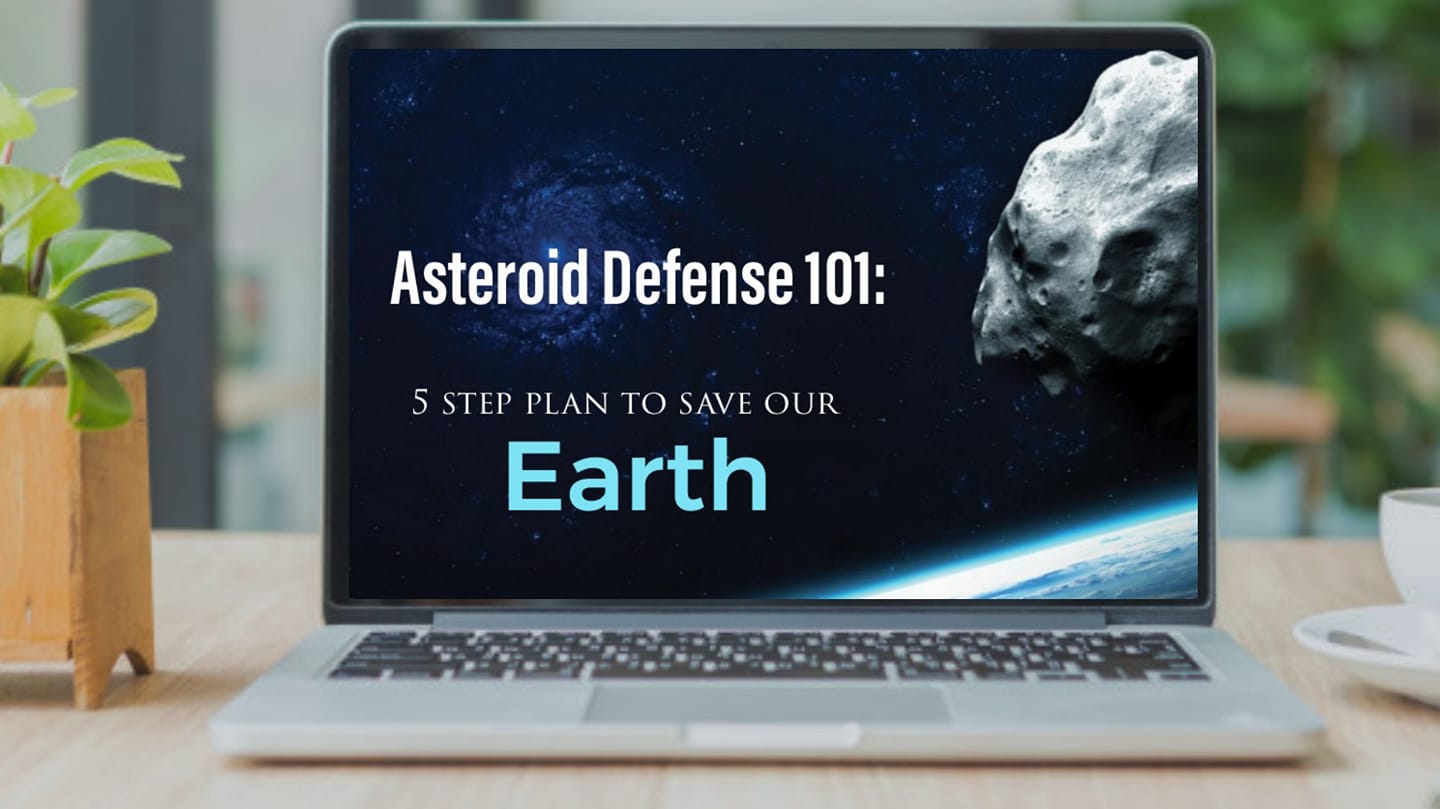Asteroids and comets are abundant in Earth’s neighborhood, and impacts, though rare, are inevitable. The force of an impact can be greater than that of an atomic bomb. An impact could wipe out entire cities or even cause global devastation.
That’s why we have to save our Earth from an asteroid impact- yes, that’s possible!
“Here is the 5 step plan to Defend the Earth: Find, Track, Characterize, Deflect, Educate and Coordinate”
- Finding asteroids
The first step is to find dangerous asteroids, which can be damageful if they hit the earth. So, How do we find asteroids?
Needless to say, through telescopes, but, what’s the science behind it?
Telescopes, look for objects in the sky, that are moving against the fixed backgrounds of stars.
The positions of the star, as seen from earth, remain fixed; but these asteroids are moving very fast and thus we can spot the moving thing (asteroid) among all other fixed objects (stars).
“A rapidly moving dot against the background stars is found – Tada! That’s an asteroid!”
Professional telescopes that discover most of the Near-Earth Asteroids each year are Catalina Sky Survey in Arizona and Pan-STARRs in Hawaii.
- Tracking Asteroids
The next step is to capture more and more images of that asteroid to determine its orbit. That’s an important step because we want to know if it’s going to hit the earth in the future or not i.e Will asteroid’s orbit approach to earth’s orbit in the next several decades?
Many observatories track the asteroids and run calculations to determine its orbit. And all of this happens publicly: you can check the data available on MNC’s or Cneos website.
Characterizing Asteroids:
Asteroids are big space rocks, and like on earth, they come in various shapes, sizes, and densities. All of that is crucial to know when we want to deflect the asteroid.
Brightness vs. Time
We can measure how the brightness of asteroid changes with time, as seen from Earth, and thus we can know about its spin rate i.e lenth of the day. ( As Asteroids are rotating, they genrally brighter on side than another at a time).
Along with that, we can know if its a singular or binary pair of asteroids
What are asteroids made of?
We use the spectroscopic method, and by the spectra obtained, we can know the elements asteroid is made of.
How hot/cold the asteroid is?
We use infrared telescopes to sense the temperature of the asteroid. Also, we can know a little more about its structure, like, how solid or fluffy it is.
RADAR
Also, if the asteroid is close enough, knowledge can be gained about its physical properties using RADAR.
“By remote sensing, we can know asteroid’s composition, spin rate, chemical and physical properties”
- Deflecting the asteroid
Suppose, we know that a big enough asteroid is going to hit the Earth, So what do we do now?
Most appropriate would be to deflect its path. In other words, we can push the asteroid slightly such that its orbit will now miss the Earth. And, woohoo! we are safe.
We have got quite a few techniques to do that.
- Gravity tractor
A spacecraft would be placed near the asteroid such that asteroid gets attracted to it due to asteroid’s gravitational pull. And thus, it’s orbit will change.
Yes, the gravitational pull of a spacecraft would be teeny tiny compared to that of an asteroid, but we just need a small deflection, for which the gravitational pull of spacecraft would work.
This option is much more useful when the asteroid is still far away from us.
- Nuclear deflection
A nuclear explosion, a few hundred meters away from the asteroid would vapourize one side of the rock, pushing the asteroid in the opposite direction.
Remember Newton’s third law right, right?
Every action has an opposite reaction. Same is applied here.
- Kinetic Imapctor.
It simply means to launch a rocket such that it will hit the asteroid, providing that little force we need to deflect the asteroid’s orbit.
“Good NEWS: D.A.R.T mission is planned in 2021 to test this technique”
- Laser ablation
It is similar to nuclear deflection. In this method, instead of nuclear explosion, multiple LASERs would heat up one side of the rock and thus gas jetting will push the asteroid in opposite direction.
“The method we choose depends upon the size of asteroid and the warning time we have.”
- Education and coordination
We need observations from many countries and thus we need international collaboration.
It is important to spread awareness and get more and more people involved in the defense.
Asteroid threat is real. We can do something about it.
If you would like to take a short course on Asteroid Defense 101 ( + free certificate ) , check this out: Asteroid Defense course by the Planetary Society.
Happy Asteroid Day in Advance! (It is celebrated on 30 June)
———in 1994, comet shoemaker hit the Jupiter and left behind scars of the size of Earth
Take this course to know more about it, and if you don’t have that much time, I have summarized it here:
Binary asteroids exist.
